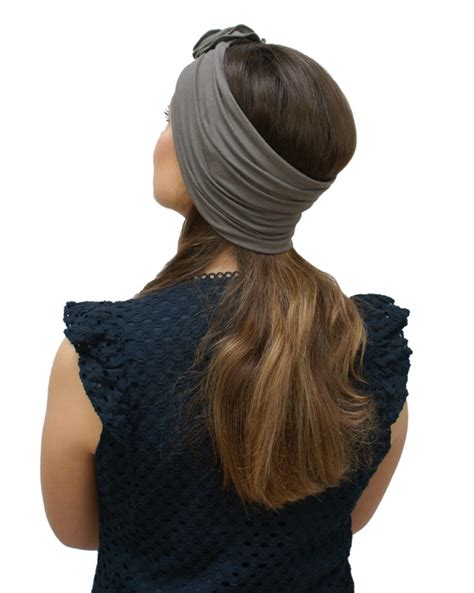Introduction

Thinning hair can be a frustrating experience, impacting self-confidence and quality of life. While underlying medical conditions should be addressed, headbands offer a non-invasive and stylish way to conceal hair loss and boost your appearance.
Benefits of Headbands for Thinning Hair
Headbands:
- Conceal thinning areas: Strategic placement can effortlessly hide bald spots or thinning areas.
- Add volume and texture: Thick headbands or those with embellishments create the illusion of fuller hair.
- Create chic hairstyles: Headbands can complement various hairstyles, adding a touch of sophistication or edginess.
- Protect from sun damage: Some headbands feature UV protection, safeguarding your scalp from harmful rays.
10 Stylish Headband Options for Thinning Hair
- Wide Velvet Headbands: Luxurious and comfortable, velvet headbands provide ample coverage and a touch of elegance.
- Headbands with Bow Details: Feminine and flirty, headbands with bows add a touch of charm and distraction from thinning hair.
- Braided Headbands: Intricate braids add volume and texture to thin hair, creating a chic and effortless look.
- Turban Headbands: Versatile and stylish, turban headbands offer full coverage and a boho vibe.
- Headband Halo Extensions: These extendable headbands feature synthetic or human hair extensions, seamlessly blending with your natural hair for a thicker appearance.
- Headbands with Beads or Sequins: Embellished headbands draw attention away from thinning hair and create a glamorous effect.
- Knotted Headbands: Casual and comfortable, knotted headbands add volume at the crown of your head, creating an illusion of fullness.
- Headbands with Prints: Bold prints and patterns distract from thinning hair and add a touch of personality.
- Statement Headbands: Oversized or embellished headbands make a bold statement, drawing attention away from hair loss.
- Fabric-Covered Headbands: Headbands wrapped in soft fabrics, such as silk or satin, provide a gentle touch and add a touch of sophistication.
Tips for Choosing the Best Headband
- Color: Choose headbands that complement your hair color or skin tone.
- Width: Wider headbands provide more coverage, while narrower headbands create a more subtle effect.
- Material: Opt for soft, breathable fabrics that won’t irritate your scalp.
- Comfort: Make sure the headband fits snugly but not too tightly, as it can cause discomfort or headaches.
Common Mistakes to Avoid
- Wearing headbands too often: Overuse can lead to scalp irritation or hair breakage.
- Not washing headbands regularly: Unclean headbands can harbor bacteria and lead to scalp problems.
- Selecting the wrong size: Too large or small headbands can slip off or cause discomfort.
- Wearing headbands that are too tight: This can restrict blood flow to the scalp and damage hair follicles.
- Neglecting underlying health issues: While headbands can conceal hair loss, it’s essential to consult a healthcare professional if you experience excessive thinning or hair loss.
Conclusion
Headbands provide a stylish and versatile solution for concealing thinning hair, boosting self-confidence, and enhancing your overall appearance. By embracing these 10 options and following the tips outlined above, you can effectively manage thinning hair and regain a sense of style and well-being.
Additional Resources
| Resource | Description |
|---|---|
| American Hair Loss Association | Non-profit organization dedicated to educating and supporting individuals with hair loss |
| Women’s Hair Loss Project | Organization offering resources and support to women experiencing hair loss |
| National Cancer Institute | Provides information and support for individuals undergoing cancer treatment and experiencing hair loss |
| International Society of Hair Restoration Surgery | Professional organization for hair restoration surgeons |
FAQs
Q: Can I wear headbands every day?
A: Occasional use is recommended to avoid scalp irritation or hair breakage.
Q: What types of fabrics are best for headbands?
A: Soft, breathable fabrics like silk, cotton, or bamboo are gentle on the scalp.
Q: What is the best width for a headband?
A: The optimal width depends on your hair density and desired level of coverage. Wider headbands provide more coverage, while narrower headbands create a more subtle effect.
Q: How often should I wash my headbands?
A: It’s recommended to wash headbands regularly to prevent the accumulation of bacteria and oil.
Q: Can headbands damage my hair?
A: Wearing headbands that are too tight or made of abrasive materials can cause hair breakage. Opt for comfortable, well-fitting headbands to avoid damaging your hair.
